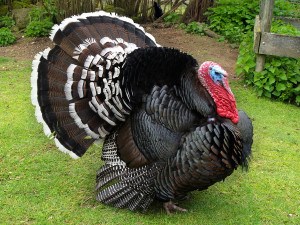FROM THE ARCHIVES: A VINTAGE CARRIER MANAGEMENT ARTICLE FROM 2015.
When Nassim Nicholas Taleb addressed a group of insurance executives recently, the author of the book “The Black Swan” was pretty straightforward in delivering his view on what insurers can learn from finance professionals.
Executive Summary
Black Swan Author Nassim Nicholas Taleb gave a short course on risk taking to insurers gathered at a recent conference, praising them for knowing how to limit their losses contractually and warning them not to adopt the risk-taking behavior of financial professionals.Not much. “We’re not good at risk taking,” the former options trader and renowned author said. Speaking at the KPMG’s Insurance Industry Conference in September, Taleb discussed the difference between well-behaved risks—for which the “portfolio effect” of diversification works well for traders and insurers of non-catastrophe lines—and extreme tail risks.
“You guys know which is which. People in finance, they don’t know,” he said. In fact, he said the only time insurers really got into trouble was when they learned how to lose money from financial types during the financial crisis.
 “This is a beautiful industry. I marvel at the sophistication of insurance,” he told the insurance crowd. “They make mistakes when they go to finance. The AIG problem was entirely a finance problem not an insurance problem,” he said, referring to American International Group’s problems with financial products or credit default swaps that moved AIG toward a near-collapse and a federal bailout in 2008.
“This is a beautiful industry. I marvel at the sophistication of insurance,” he told the insurance crowd. “They make mistakes when they go to finance. The AIG problem was entirely a finance problem not an insurance problem,” he said, referring to American International Group’s problems with financial products or credit default swaps that moved AIG toward a near-collapse and a federal bailout in 2008.
In particular, Taleb praised insurers for knowing how to limit extreme—low frequency, high severity—losses so they don’t spiral out of control with tools like exclusions, caps, limits and pricing adjustments. “And you guys learn from example,” he said, referring to the unlimited liabilities that wiped out the Names that invested in Lloyd’s in the 1980s.
Contractual limitations are the way to go to keep the impacts of low frequency-high severity losses in check, he said.
“There are two ways to approach the problem of risk. The first one is trying to understand the dynamics of the world. Interesting, but you’re not going to get very far. The second one is to make sure your contract insulates you from it.”
“In other words, what do you need a statistician or a lawyer? You need both but I’d rather have 10 lawyers for every statistician,” said Taleb who identified himself as also being a statistician.
Lawyers and insurance underwriters can change contracts to protect themselves from risks they don’t understand, he reasoned. “My principle is that it’s preferable to take risks you understand then try to understand risk you’re taking. How do you do that? It’s much easier to change a risk contractually than then [get a grip] on the future.
“If I don’t understand something, exclude it….You people know a lot about what exclusion means. If you have an uncapped claim, it is Extremistan,” he said, referring to a metaphoric world of extreme risks that he introduced in his book “The Black Swan.”
Black Swan Basics: Don’t Be a Turkey
Taleb started his talk at the KPMG conference by introducing the two risk environments described in his books: Mediocrastan and Extremistan.
First describing the well-behaved world of Mediocrastan, he asked the audience to imagine an experiment in which they would randomly select 10,000 people from the world and put them on a scale. Then add to the mix the heaviest human being they can find. “How much of the total would that person represent? Tiny. [Maybe] two basis points,” Taleb said.
“That’s the law of large numbers. That’s what you have in insurance. It’s called diversification; it’s called the portfolio effect. It works….As your sample becomes large, not a single outlier—what we call a Black Swan—can effect it.”
Going a step further, Taleb asked the insurance executives in the audience to imagine adding the richest person on the planet to the sample. “How much of the total wealth will that person represent?” Nearly 100 percent, he said, noting that an average of in the hundreds of thousands for the others would now be overshadowed by the $70-odd billion of the richest person. “The portfolio effect doesn’t work in a domain that’s entirely dominated by outliers,” he said.
Similarly, very few companies determine the total capitalization, he said noting that when he was a trader, about 30 of the 12,000 companies listed on major stock exchanges represented half the capitalization. “Welcome to Extremistan where the winner take all effect prevails,… where very few people determine the net worth, where very few companies determine the total capitalization,” and where very few events determine profit or loss, he said.
 Black swans are Extemistan phenomena, he said, referring to events that fall outside the realm of regular expectations. While his published works refer to the sighting of a black swan at a point in time when only swans with white feathers had been previously seen, at the KPMG conference (and in other presentations), Taleb used the example of a turkey to underscore the extreme impact of a black swan event.
Black swans are Extemistan phenomena, he said, referring to events that fall outside the realm of regular expectations. While his published works refer to the sighting of a black swan at a point in time when only swans with white feathers had been previously seen, at the KPMG conference (and in other presentations), Taleb used the example of a turkey to underscore the extreme impact of a black swan event.
A turkey is fed by a butcher every day, and everyday confirms to the turkey that the butcher loves turkeys with increased statistical confidence until a day in November that he didn’t see coming, when he becomes Thanksgiving dinner. “The twist to that story is those who make money on Wall Street, people keep giving them more money [and] the turkey problem has a cumulative effect,” he said.
Warning against the notion of risk-free money, he said, “When someone makes money four years in a row, people start saying hello to you… And then you make money in more years, they will laugh at all your jokes. [But] if you apply insurance concepts, you know there’s something fishy,” he said. While banks call themselves geniuses, they lost more money in one event in the 1980s than in the history of banking, referring to a figure in the trillions. “Even asbestos did not harm you that much,” Taleb said.
The optimal strategy is to keep from having the tail risk blowups of Extremistan by limiting the downside losses contractually, he suggested. As he spoke, he displayed a cartoon slide of one turkey saying to another, “Be reasonable Frank. Why does he feed us so much?” Insurers are as insightful as the wise turkey, his remarks suggested.
The Role of Predictive Models
Taleb spoke to the attendees of insurance conference following opening remarks by Laura Hay, KPMG’s insurance practice leader, who advanced the idea that predictive models are a critical tool for driving “transformative growth” for insurers struggling to grow top lines and dealing with lagging investment returns and other obstacles to bottom-line profit growth.
That prompted a follow-up question from Constance Hunter, KPMG’s chief economist, who interviewed Taleb on stage after his presentation. What did he think about the use of predictive models in insurance, Hunter wanted to know.
“Predictive modeling works beautifully for Mediocristan,” Taleb said, noting that for much of the risk that property/casualty insurers take on can, in fact, be effectively modeled. Reinsurance—not so much, he said. “Reinsurance has fat tails. But they know it. The more you are in Extremistan, the less these things work,” he said. “The good thing about insurance is that they [underwriters] know where [the models] don’t work.”
They charge more premiums. They know that earthquakes are very unpredictable as is the intensity and damage from a hurricane. For these risks, “the models are shockingly inaccurate,” he asserted. “But people know it. They take the worst of the models” from a multi-model approach, he said.
He continued: “Predictive modeling does not work for socioeconomic variables. Period. Zero.”
Referring to the global financial crisis in 2008, Taleb underscored his point. “You know how many models there are on the planet? How many of them saw the crisis?”
No model predicted it, he said. “That’s always been the story of forecasting,” he said, suggesting that extreme events are never captured within the models before they occur. “Next year, we got it right,” he said, referring to typical after-the-fact proclamations of forecasters who claim to have seen the extreme unpredictable risks coming in hindsight.
Giving a different summary of when predictive models will work and where they won’t, Taleb said, “Variables that have time in them. Beware. Things that have space in them, no.” He clarified the space reference saying that if you are predicting a result for a cross-section of the population, for example, models can work well.
“Most of insurance is immune from the problems of Extremistan and predictive analytics will work. They will also work very well with terrorism,” he said, referring to the “one-dimensional problem” of predicting whether someone is likely to be a terrorist. “All you want to know if the person has killed someone before. Yes/no. Do they hang around with someone who has killed someone before? Yes/no. Do they hang around with someone who knows someone who has killed someone before?”
Similarly, predictive modes can work for fraud. “Stereotypes can pretty much predict who is going to be committing fraud.”
“Can you predict cyber terror? No,” he continued. “That’s an Extremistan problem. Individual crime you can profile but big cyber” is too complex, he suggested.
Hunter also asked Taleb to offer investment advice for P/C and life insurers in the current low-yield environment, and the author and risk expert repeatedly urged insurers to invest conservatively. “Never yield hog,” he said at one point.
What about derivatives investments?
“Don’t use derivatives. Please don’t,” Taleb said without elaborating much. “I was a derivative trader for a long time. Not just a trader, I’m also a quant,” he said, giving this succinct advice: “Short term options OK. Listed options, yes. Anything that is complicated, and requires a quant, no.”





















 Berkshire Hathaway Announces Leadership Appointments: New CEO at GEICO
Berkshire Hathaway Announces Leadership Appointments: New CEO at GEICO  Why Insurance Telematics Integrations Fail
Why Insurance Telematics Integrations Fail  New York Times Sues Perplexity AI for ‘Illegal’ Copying of Content
New York Times Sues Perplexity AI for ‘Illegal’ Copying of Content  AI in Property/Casualty Insurance: Why Trusted Data Is the Missing Link
AI in Property/Casualty Insurance: Why Trusted Data Is the Missing Link 











